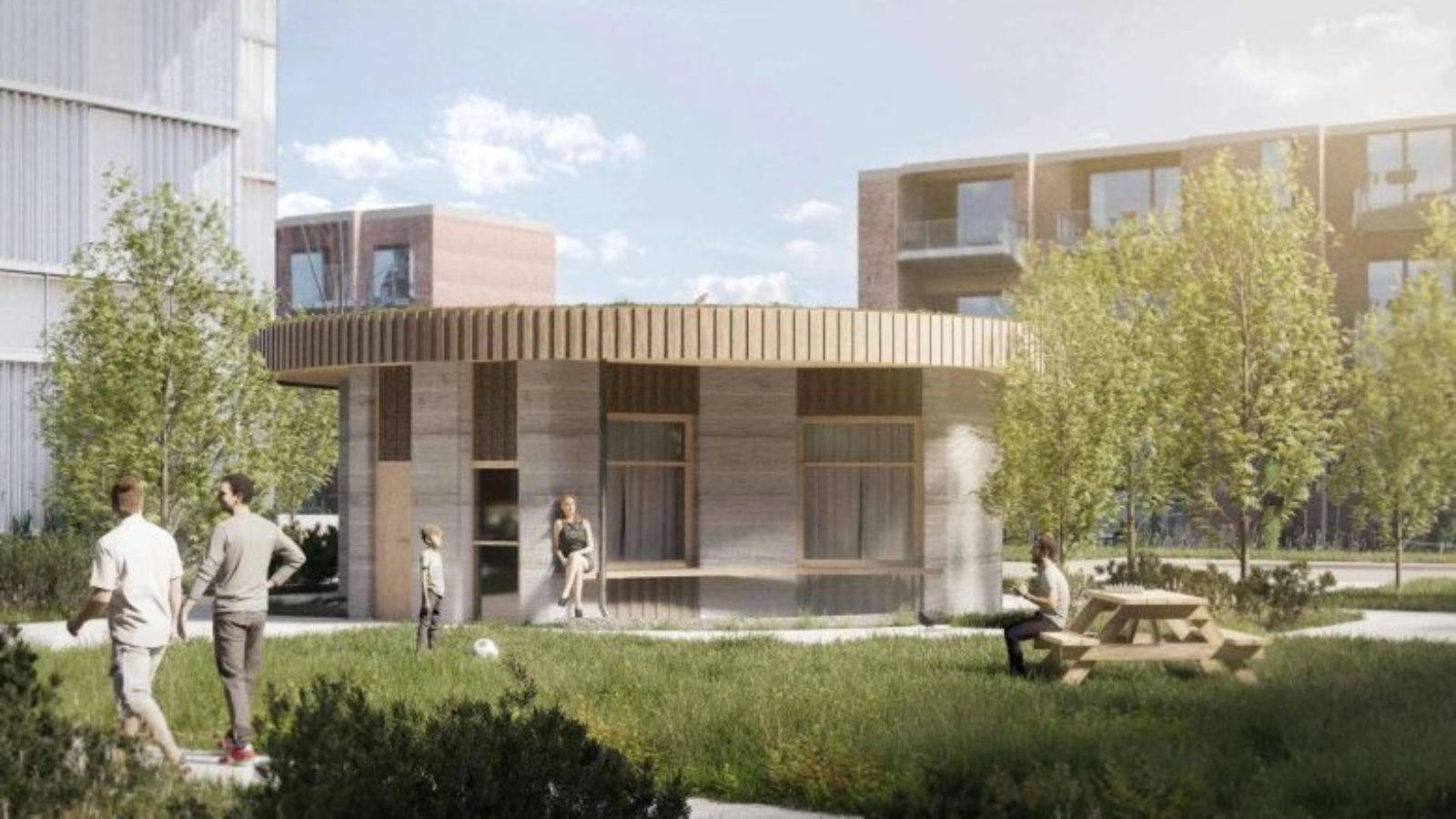AKF, the large Danish real estate developer, in partnership with Danish 3DCP Group, and Saga Space Architects, has 3D printed a low CO2 concrete community building in the greater Copenhagen area measuring 72m² (775 SF). The building was created using a COBOD BOD2 printer and will house a gym, guest room, and common laundry facility for residents.
To further reduce the CO2 footprint, the entire AKF project was printed using low CO2 cement, which has a carbon footprint of 30% lower than normal cement. The low CO2 cement was mixed with local sand and gravel and turned into 3D printable concrete using the D.fab admixtures method developed by Cemex and COBOD. Compared to the 3D printing of mortars, the low CO2 cement 3D printable concrete reduces the CO2 footprint by 50%.

Manufacturing on Demand
Generally, AKF sees significant potential in 3D printing technology beyond concrete and envisions a future where natural resources like clay-rich soil can be used for 3D printed construction. “3D printing opens the door to a world of possibilities, and hopefully, we can contribute to pushing the industry’s traditional construction methods,” said Vibeke Lorenzen, Technical Director at AKF.
The whole community building in Copenhagen was 3D printed using five printing days. During the printing, there was a live PR event where the leading Danish newspapers and construction magazines showed up to witness the printing process live. “Seeing is believing when it comes to new technology. So, we really wanted to show live how reliable, fast, and precise the technology is and we are really happy for the turnout from the press, that came in large numbers,” said Mikkel Brich, CEO of 3DCP.

Saga Architects, who also designed the first building that 3DCP Group made in Denmark – the tiny house in Hobro – strived to make the community building appear even more forthcoming and friendly by using a lot of wood for the decorative parts and organic shapes for the walls, a detail virtually impossible to make with conventional methods.
You might also like:
Mighty Buildings awarded $5M to develop affordable 3D printed green housing:
* This article is reprinted from 3D Printing Media Network. If you are involved in infringement, please contact us to delete it.
Author: Edward Wakefield


Leave A Comment